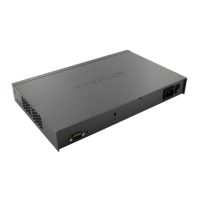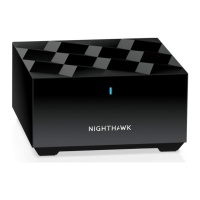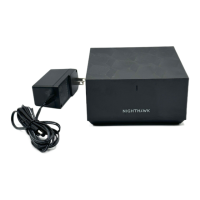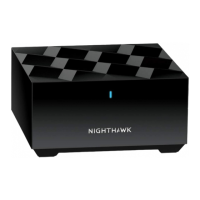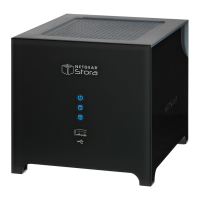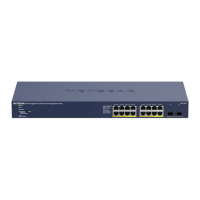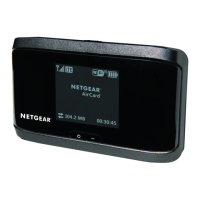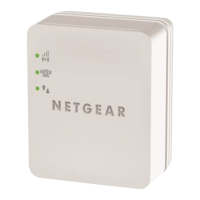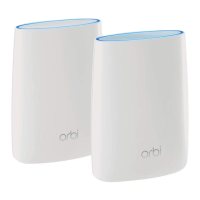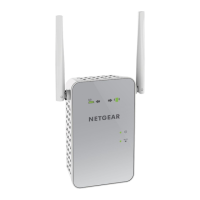
Do you have a question about the NETGEAR M4100 Series ProSAFE and is the answer not in the manual?
| Product Type | Managed Switch |
|---|---|
| Form Factor | Rack-mountable |
| Layer | Layer 2/Layer 3 |
| Management | Web-based, CLI, SNMP |
| VLAN Support | Yes |
| Quality of Service (QoS) | Yes |
| Security Features | ACLs, 802.1x |
| Dimensions | Varies by model |
| Weight | Varies by model |
| Operating Temperature | 32°F to 122°F (0°C to 50°C) |
| Storage Temperature | -20° to 70° C (-4° to 158° F) |
| PoE Support | Yes (on select models) |
Explains the structure of commands, including keywords and parameters.
Details the conventions used in the manual for command formatting and parameters.
Describes common parameter values, formatting, and examples.
Explains the naming convention for slots and ports in the switch.
Explains how to use the 'no' keyword to reverse command actions or reset values.
Describes the flexible software modules that determine available commands and features.
Details the different CLI command modes and their associated prompts.
Explains how to use tab completion and command abbreviation for efficiency.
Lists common CLI error messages and their meanings.
Explains keyboard shortcuts for editing commands and improving entry speed.
Describes how to use the question mark (?) to access help and command information.
Explains methods for accessing the Command Line Interface (CLI).
Commands for viewing and configuring port settings, including interface, VLAN, and LAG.
Commands for creating, deleting, and managing loopback interfaces.
Commands for configuring Spanning Tree Protocol (STP) to prevent network loops.
Commands for configuring VLAN settings, including database, management VLAN, and port VLANs.
Commands for configuring switch port modes such as access, trunk, and general.
Commands for configuring double VLAN (DVLAN) tagging for customer traffic.
Commands for configuring Voice VLAN to prioritize voice traffic and ensure quality.
Commands for configuring provisioning to prioritize ports using 802.1p.
Commands for configuring and viewing protected ports to restrict traffic forwarding.
Commands for separating VLAN domains into subdomains with Layer 2 isolation.
Commands for configuring Generic Attribute Registration Protocol (GARP) and viewing status.
Commands for configuring GVRP information for dynamic VLAN creation.
Commands for configuring GARP Multicast Registration Protocol (GMRP).
Commands for configuring port-based network access control (802.1x).
Commands for configuring supplicant functionality on point-to-point ports.
Commands for configuring storm control to limit traffic storms and protect the network.
Commands for configuring flow control settings and status for IEEE 802.3x.
Commands for configuring port-channels (LAGs) to combine multiple Ethernet links.
Commands for selecting network traffic for analysis using tools like SwitchProbe.
Commands for configuring static MAC filtering to specify destination ports.
Commands to enable the switch as a DHCP Layer 2 relay agent.
Commands for including vendor and configuration information in DHCP client requests.
Commands for configuring DHCP Snooping to enhance network security.
Security feature to reject invalid and malicious ARP packets.
Commands for configuring IGMP Snooping to conserve bandwidth for multicast traffic.
Commands for configuring and displaying IGMP Snooping Querier information.
Commands for MLD Snooping to limit flooding of multicast traffic in IPv6.
Commands for configuring and displaying MLD Snooping queries.
Commands for configuring Port Security (MAC locking) to secure the network.
Commands for configuring Link Layer Discovery Protocol (LLDP) for device advertising.
Extensions to LLDP for network configuration, policy, and device location.
Explains Multicast VLAN Registration (MVR) and its purpose in forwarding multicast traffic.
Commands for enabling, disabling, and configuring MVR membership and parameters.
Commands for configuring ARP, viewing ARP information, and managing the ARP cache.
Commands for enabling and configuring IP routing for interfaces and the switch.
Commands for viewing and configuring VLAN routing and status information.
Commands for configuring BootP/DHCP Relay for forwarding DHCP requests.
Commands for configuring DHCP relay agents with multiple server addresses.
Commands for configuring options for transmitting various types of ICMP messages.
Commands for configuring CoS settings to control traffic priority and rate.
Commands for configuring QoS Differentiated Services (DiffServ).
Commands to define traffic classification using Behavior Aggregate (BA) and Multi-Field (MF) classes.
Commands to specify traffic conditioning actions like policing and marking.
Commands to assign DiffServ traffic conditioning policies to interfaces.
Commands to display DiffServ configuration and status information.
Commands for configuring MAC ACL settings to control network access.
Commands for configuring IP ACL settings to control network access.
Commands for configuring IPv6 ACL settings to control network access.
Commands to define specific times of day and week for ACL rule activation.
Commands for detecting VoIP streams and prioritizing them with Class of Service.
Explains Power over Ethernet (PoE) technology and its governing standards.
Commands for enabling, disabling, and configuring PoE functionality and detection.
Commands for automatic switch configuration when no configuration file is found.
Features allowing two software images for reduced downtime during upgrades.
Commands to view system features, components, and configurations.
Commands for configuring system logging, viewing logs, and managing logging settings.
Commands for configuring email alerts and SMTP server settings.
Commands to troubleshoot connectivity issues and restore factory defaults.
Commands to automatically configure system time and date using SNTP.
Commands to configure DHCP server settings for address allocation.
Commands for hostname lookup service to translate domain names to IP addresses.
Commands to capture packets for troubleshooting protocol-related problems.
Commands to improve network engineer capability for diagnosing switch conditions.
Command to determine cable connection status on a selected port.
Commands for monitoring high-speed switched and routed networks.
Commands to detect and clear IP address conflicts on the switch.
Commands for RMON statistics, history, alarms, and events based on RFCs.
Commands to detect unidirectional links on physical ports.
Commands to display USB flash device status and content.
Commands to assign an IP address to the switch management CPU for management access.
Commands to configure a logical interface for management access.
Commands to configure the console port for management access via serial cable.
Commands to configure and view Telnet settings for remote management.
Commands to configure SSH access to the switch for secure remote management.
Commands to generate keys and certificates for secure switch access.
Commands to configure HTTP and secure HTTP access to the switch via Web browser.
Commands to close remote connections or view information about system connections.
Commands to add, manage, and delete system users for access control.
Commands to configure SNMP on the switch to act as an agent for network management.
Commands to configure the switch to use RADIUS server for authentication and accounting.
Commands for access control via TACACS+ servers for authentication and accounting.
Commands to generate, upload, and apply configuration scripts for system setup.
Commands to configure the pre-login banner and system prompt.
Details supported green Ethernet power saving modes: Energy Detect and EEE.
Enables port circuitry shutdown during inactivity to save power.
Combines MAC with ports for low-power operation by disabling port functionality.
Commands to configure Energy-Detect and EEE modes for power saving.
Lists common log messages related to the Core system components.
Lists common log messages related to various utility functions.
Lists common log messages related to management functions.
Lists common log messages related to switching functions.
Lists common log messages related to Quality of Service (QoS) functions.
Lists common log messages related to routing and IPv6 routing functions.
Lists common log messages related to multicast operations.
Lists common log messages related to stacking operations.
Lists common log messages related to system technologies and general errors.
Lists common log messages related to OS support and API failures.
